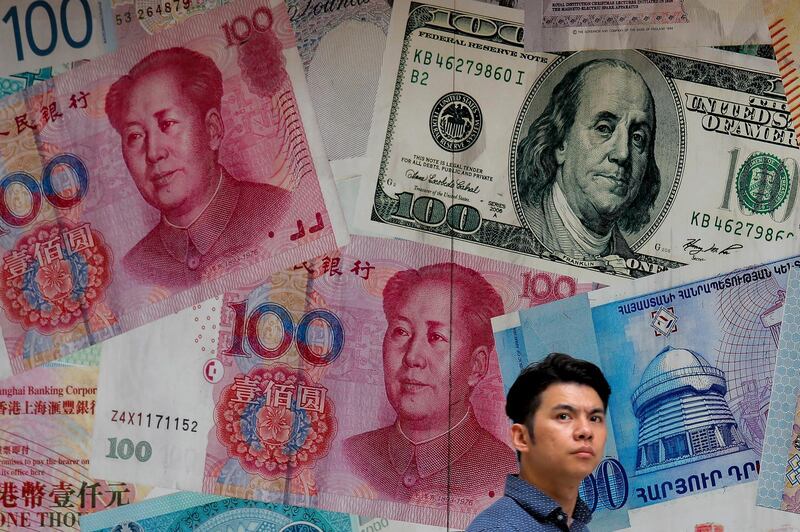The latest escalation in the trade war between the US and China, the world's two biggest economies, has been blamed once again for the recent rout in global stocks and commodities.
The National takes a look at why the stand-off has come to be the biggest influence over the movement in the oil markets.
How did the trade war between the US and China begin?
US President Donald Trump had, as part of his 2016 election campaign promises, vowed to label China a currency manipulator. He accused Beijing of artificially keeping its currency low in order to facilitate cheap exports into the US. He promised his voter base that the American manufacturing industry hurt from an influx of cheap Chinese imports would be revived on the basis of increased protectionism and said he would target Beijing with tariffs. Two years into his presidency Mr Trump has made good on his campaign promise by slapping billions of dollars of tariffs on Chinese imports.
Who started the trade war?
President Trump in March last year tasked the country’s trade representative into looking at levying tariffs on up to $60 billion (Dh220bn) worth of Chinese goods for what he said were unfair trade practices by Beijing over the years.
China responded with its own tariffs on 128 goods imported from the US, ranging from aluminium and steel pipes to soybeans. Meanwhile, the US then considered additional levies on Beijing, slapping a 25 per cent tax on $50bn worth of goods, which was eventually increased to include $200bn worth of imports. China responded in kind.
Trade negotiations between the two sides dragged on with the US eventually hitting Beijing with additional 10 per cent tariffs on $300bn of Chinese goods on August 1. China then allowed its currency to depreciate, breaching a key threshold of 7 yuan per US dollar. The US Treasury immediately labelled China a currency manipulator, which prompted Beijing to strengthen the yuan. China then stopped imports of US agricultural products.
What impact has it had on markets?
When the first round of tariffs were announced, markets remained generally optimistic on the promise of job creation in the US. Optimism soon turned sour as the tit-for-tat trade war between the world’s two biggest economies resulted in a contraction in global economic growth. The International Monetary Fund last month revised its global growth outlook for 2019 downward to 3.2 per cent for this year, after an earlier downgrade in April. It also said risks to its forecast were "mainly to the downside", citing trade tensions. US economic growth for the second quarter of 2019 contracted to 2.1 per cent, well behind the Trump administration’s pledge to keep growth over 3 per cent.
How has it affected the oil markets?
The protracted stand-off between the US, the world’s largest producer of crude, and China, the biggest importer of the commodity, have kept prices in check for much of the year. Benchmark Brent traded within a tight band between $60 and $67 over the last two months. Yet after the announcement of the latest tariffs, West Texas Intermediate benchmark fell to its steepest single-day decline in four and-a-half years on August 1, while Brent lost 7 per cent of its value on the same day. Brent has since remained below $60 as markets fear further escalation between the US and China.
Why has oil been so deeply affected?
With slowing global economic growth and increased protectionist measures, global demand for oil has also declined as productivity and consumption is predicted to slow. According to Bank of America Merrill Lynch, the latest round of tariffs could weaken global oil demand by an additional 250,000 to 500,000 barrels per day (bpd). China drives much of the demand for oil. While Beijing has not gone after US oil, slowing economic growth exerts pressure on prices, driving them down. The International Energy Agency (IEA) revised its growth forecast for oil downward to 1.1 million bpd and warned further corrections may be in store for the remainder of the year.
Is oil only responsive to the trade war?
Oil markets are driven by the fundamentals of demand and supply. The trade war has weakened global demand for oil to such an extent that geopolitical tensions, to which oil has been most susceptible, have barely moved the needle on prices. Oil remained largely immune to a spate of tanker attacks in the congested Strait of Hormuz since May, responding more to escalations in the trade war.








